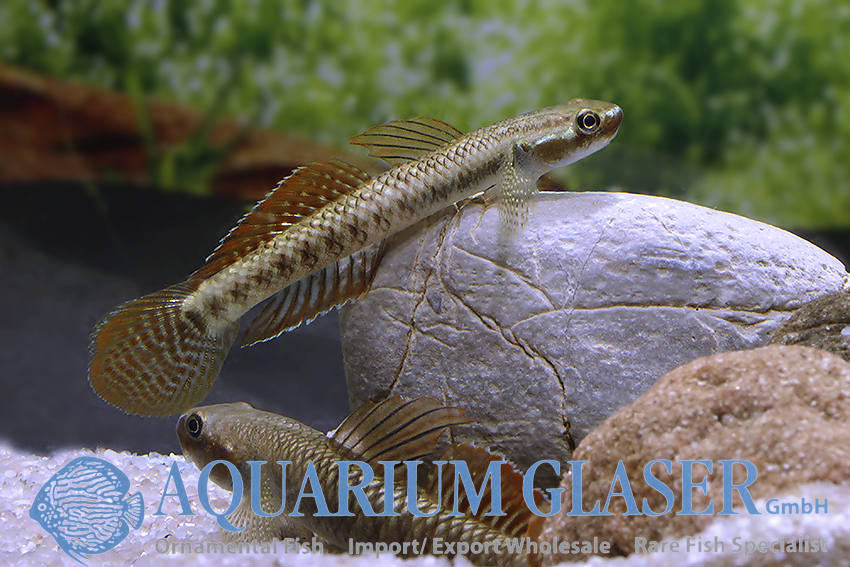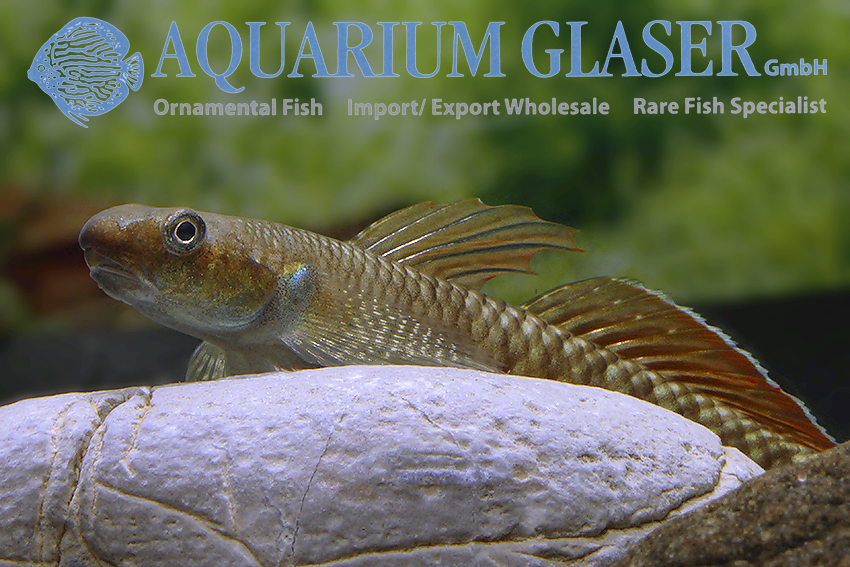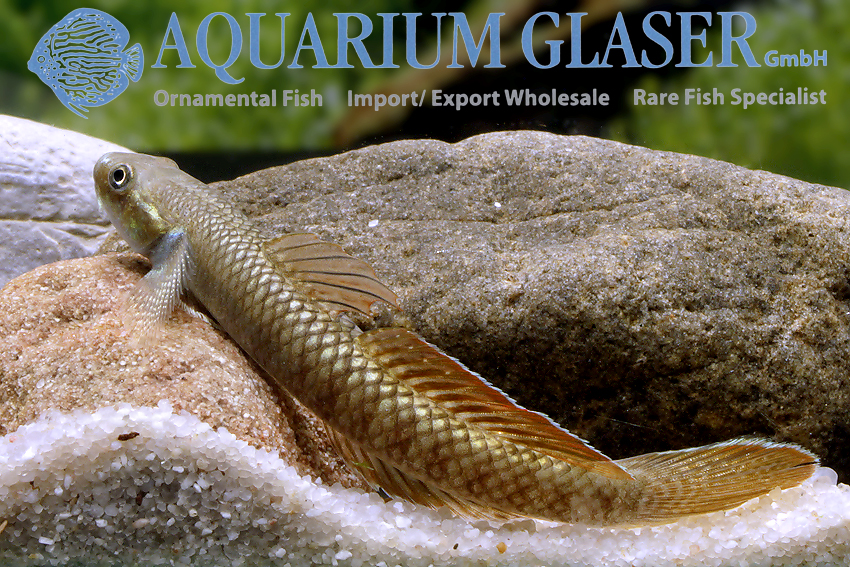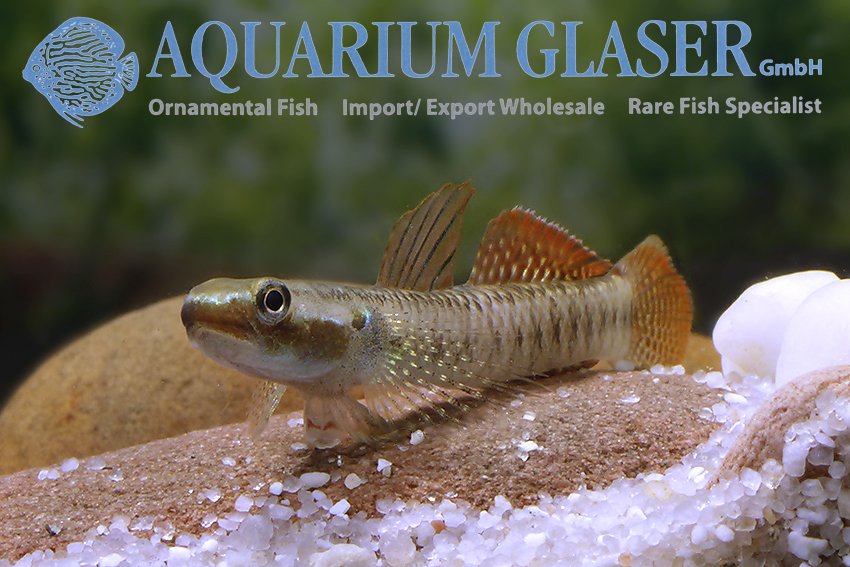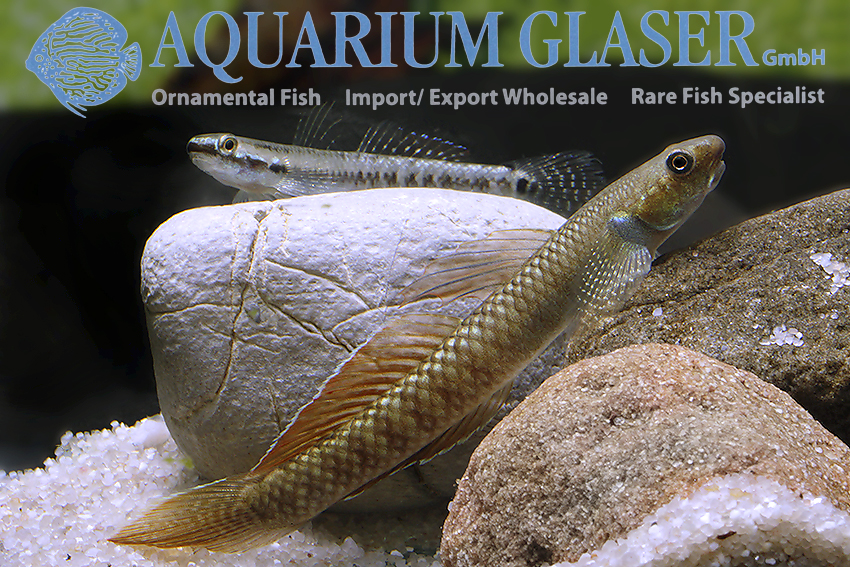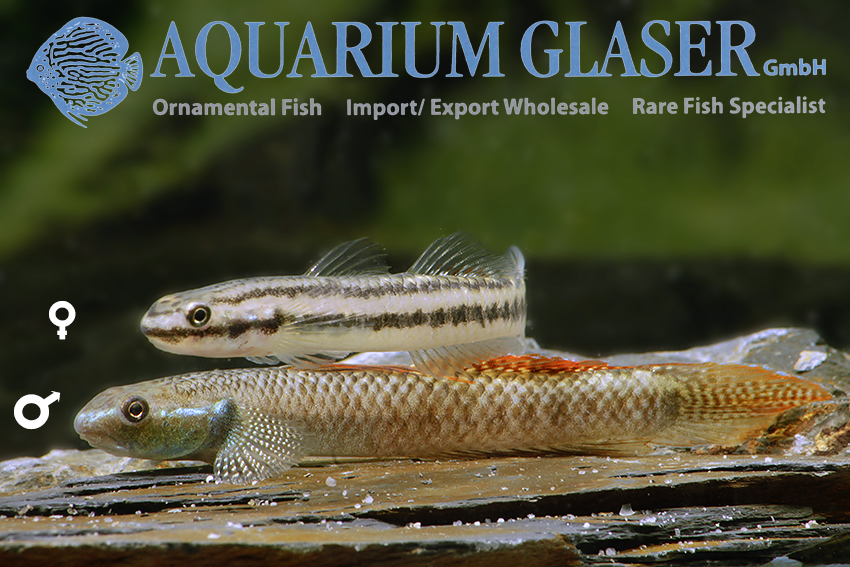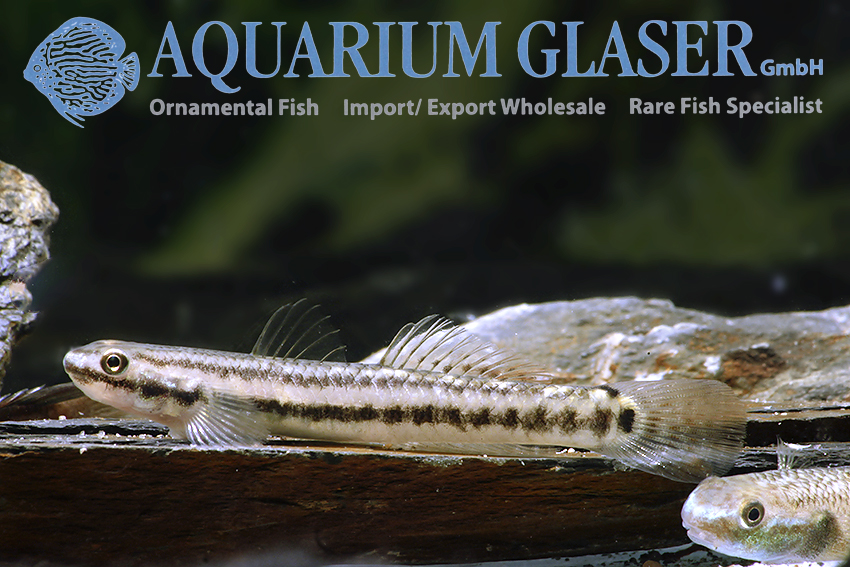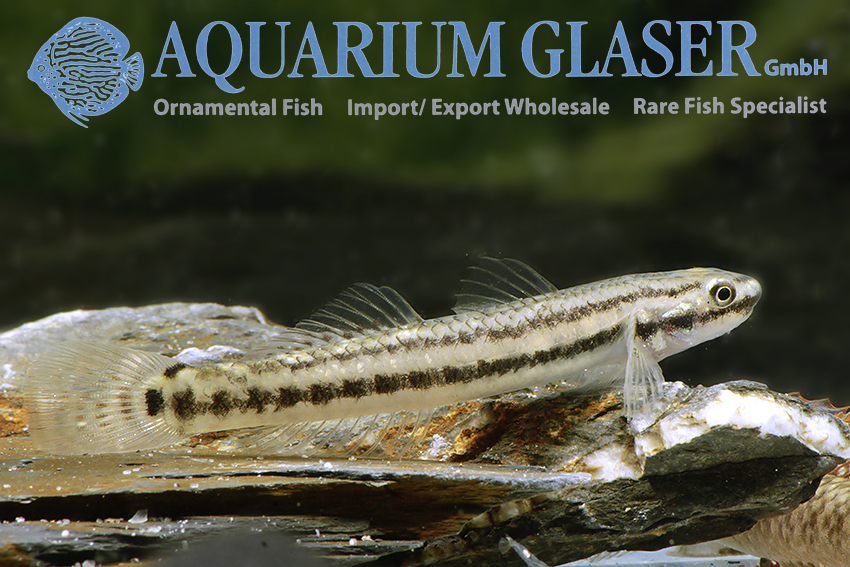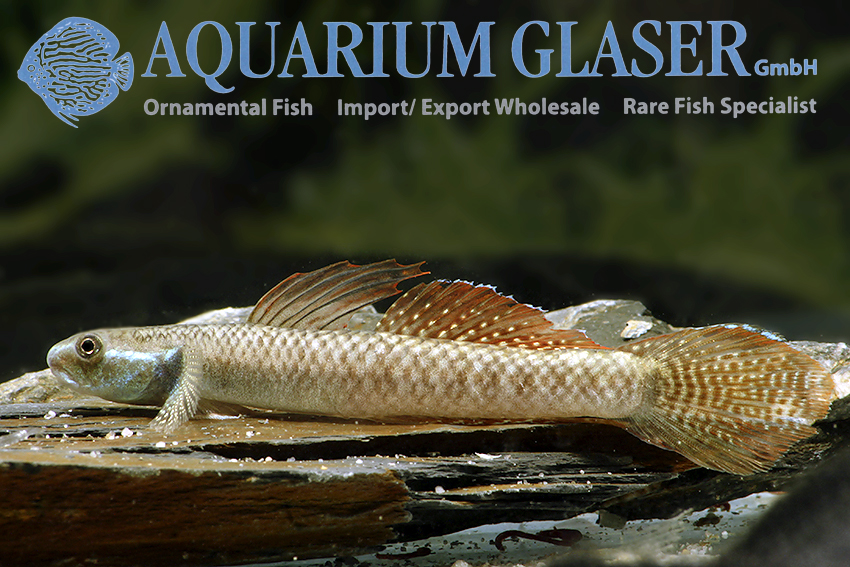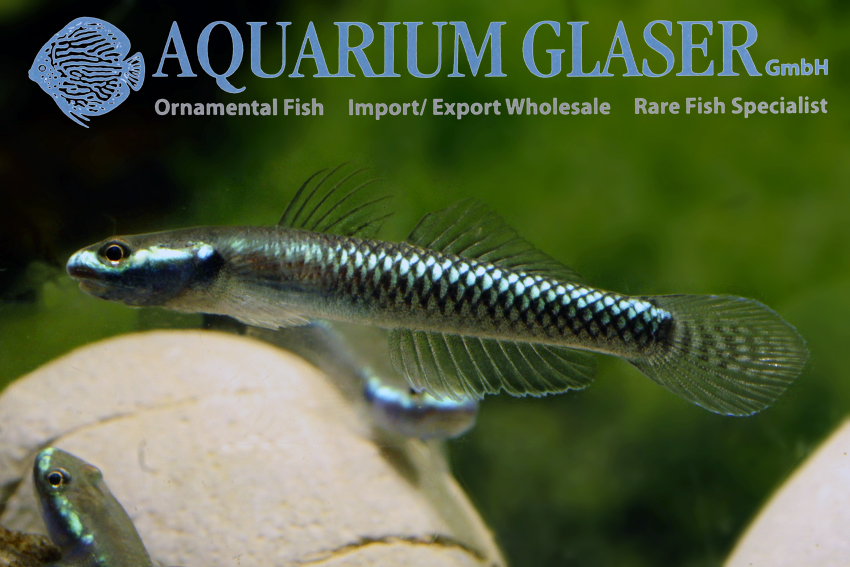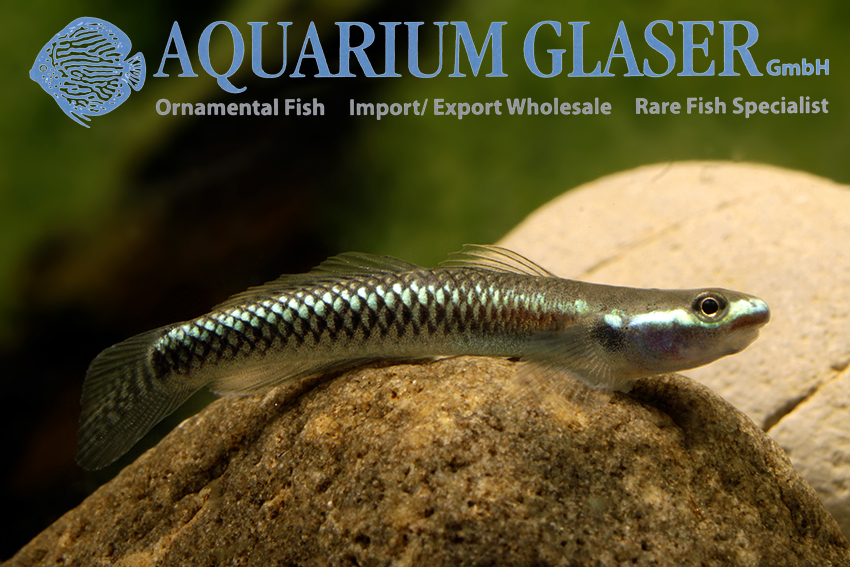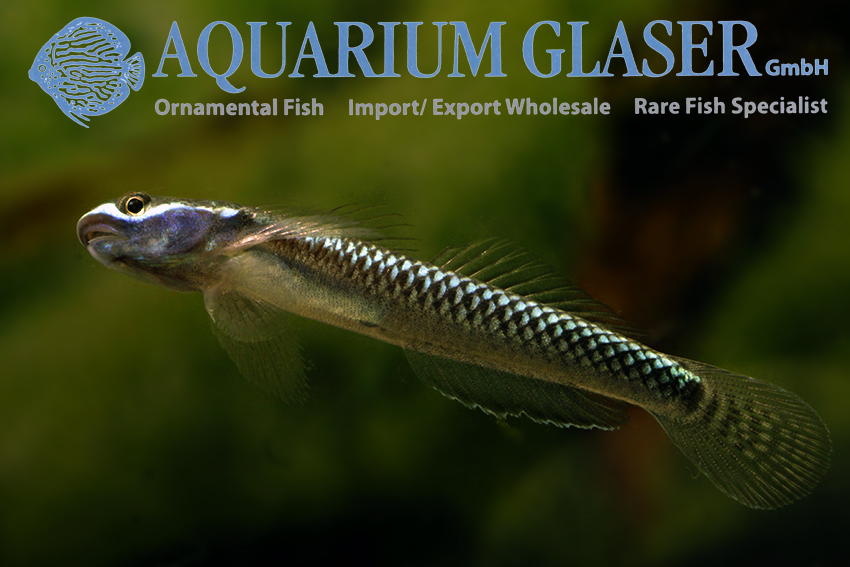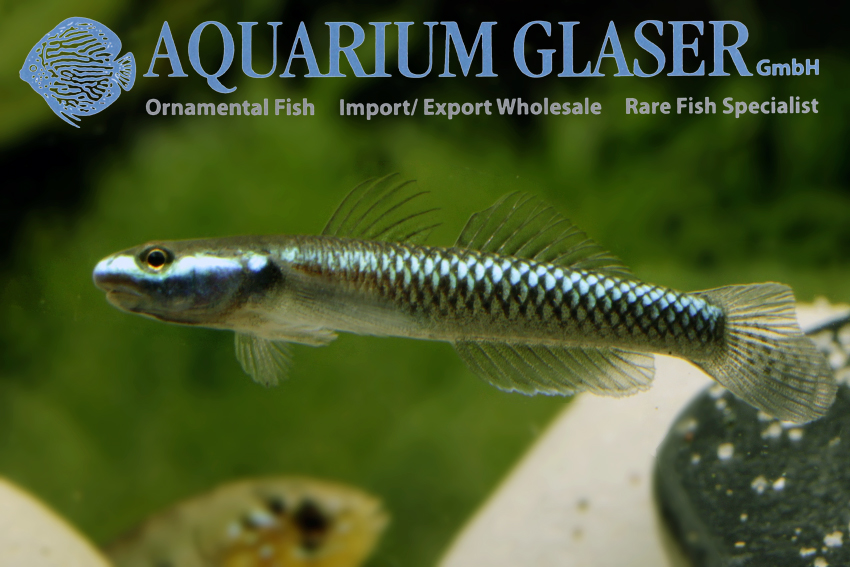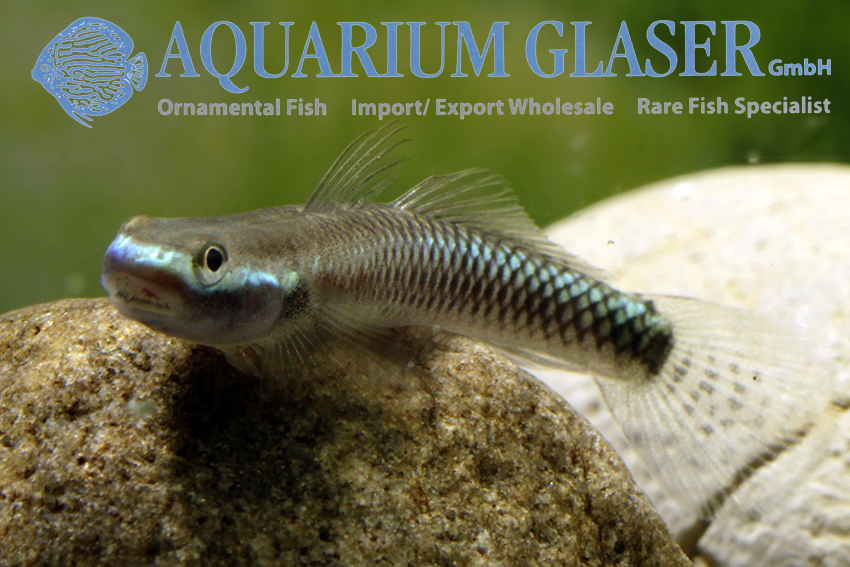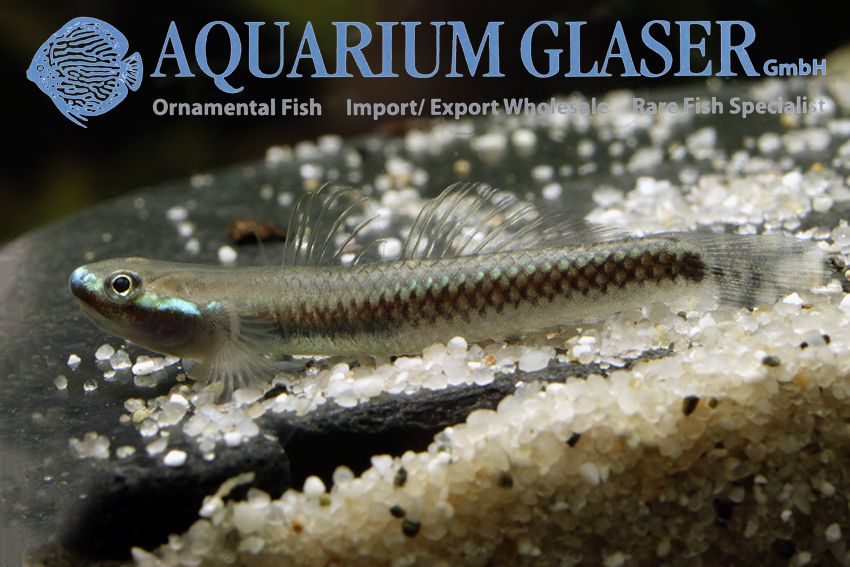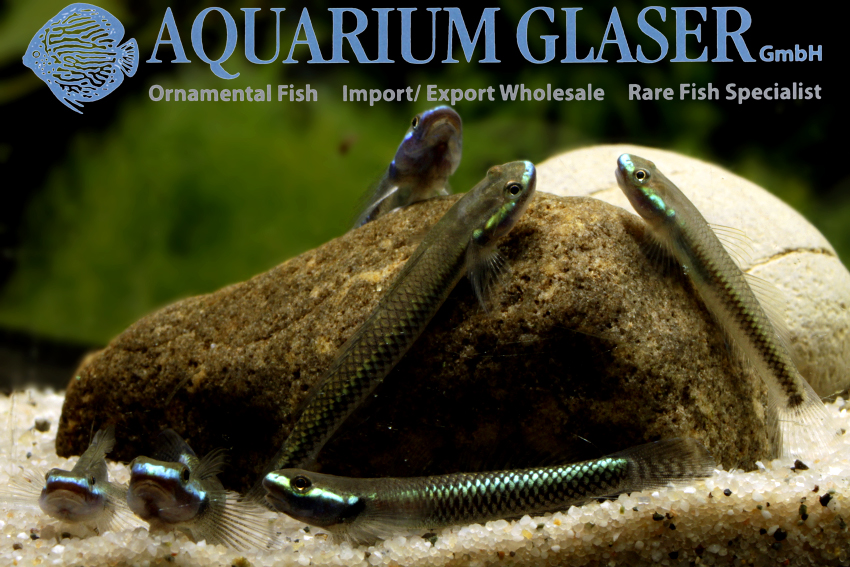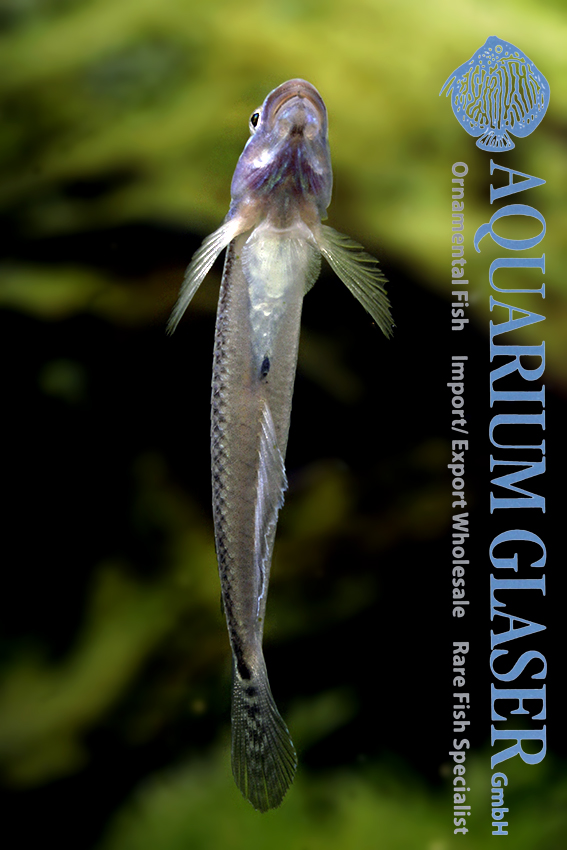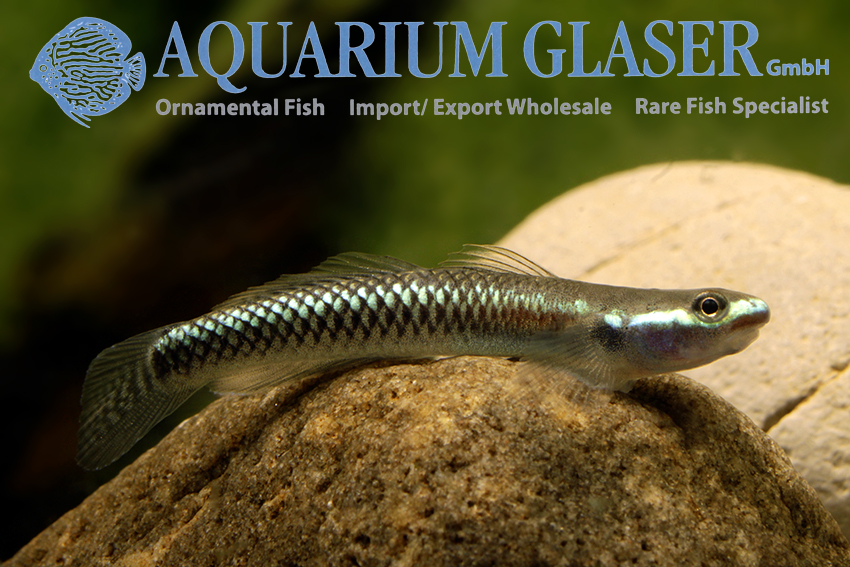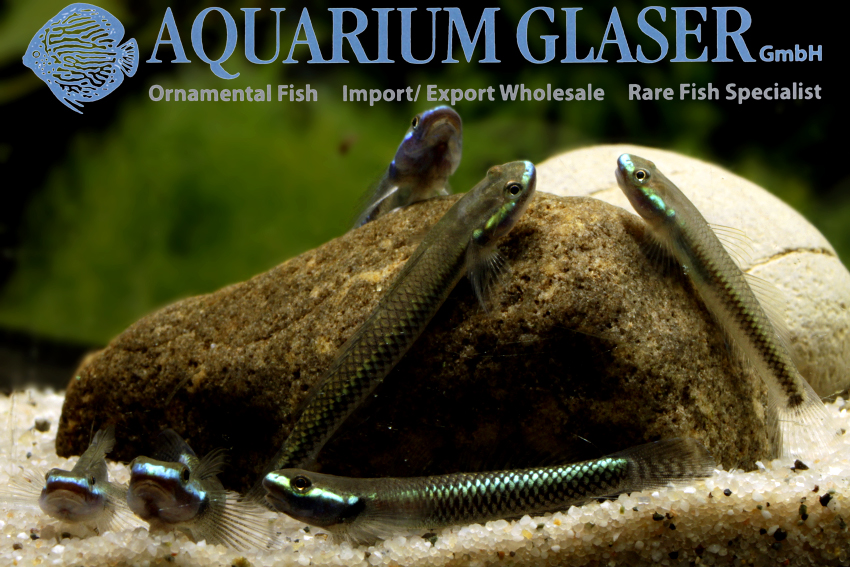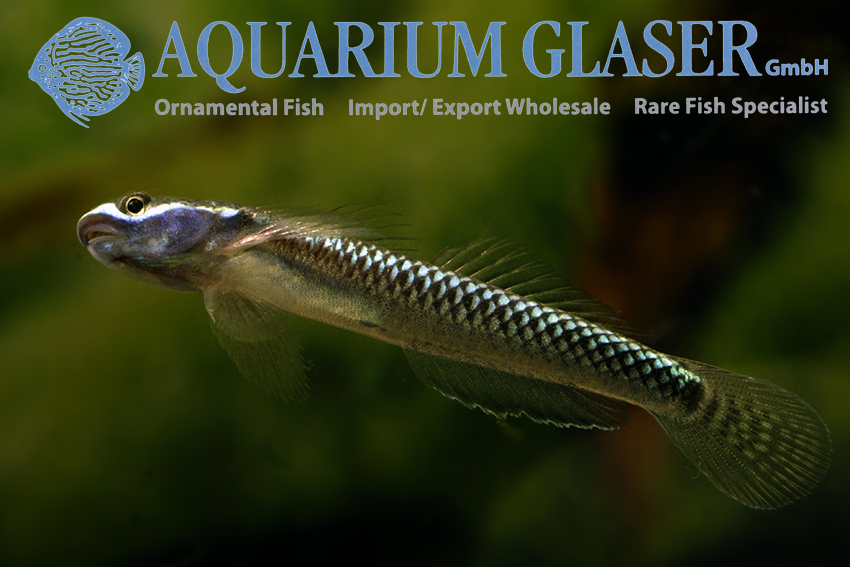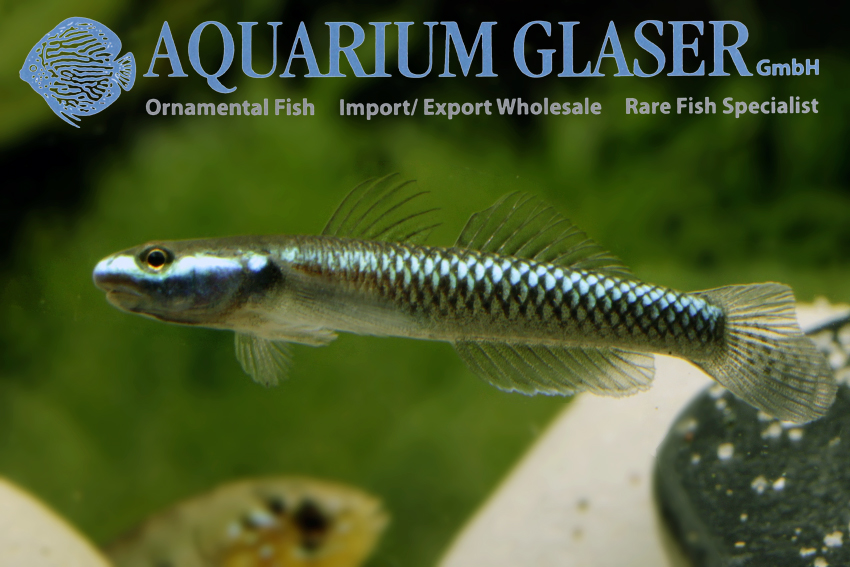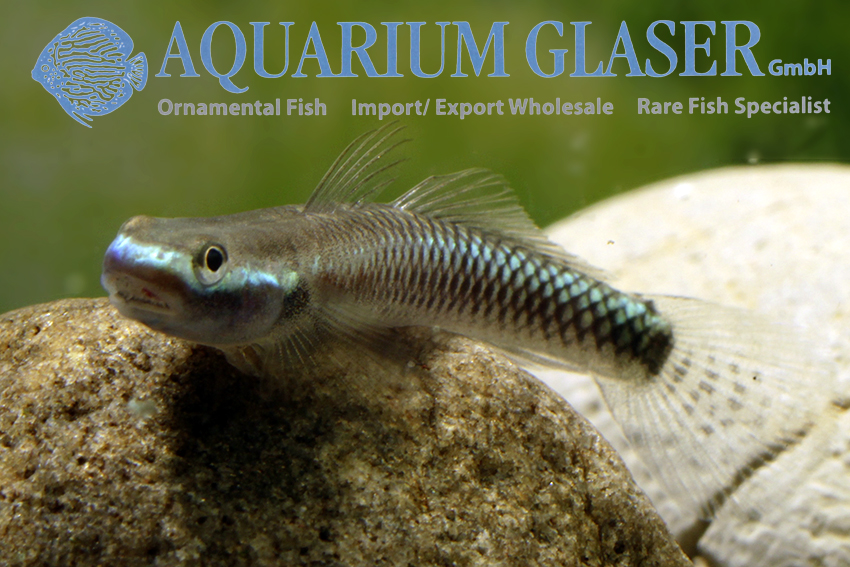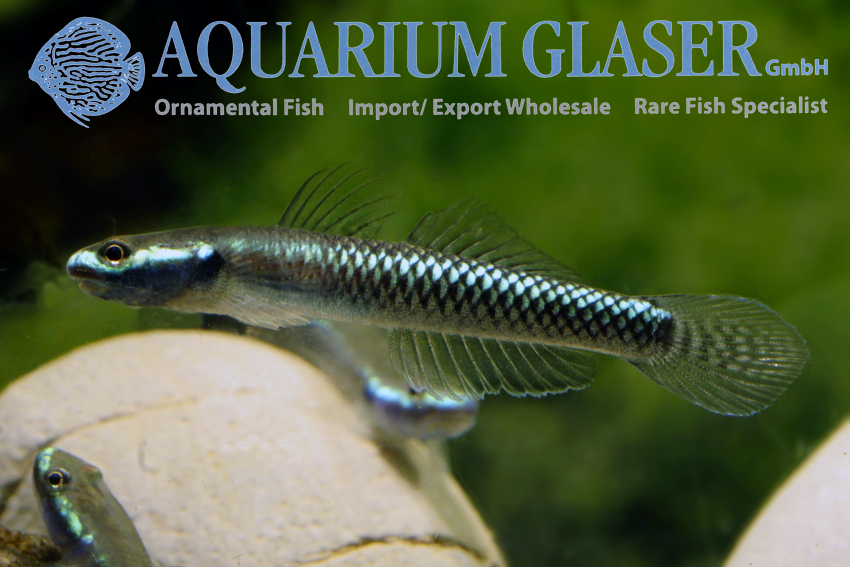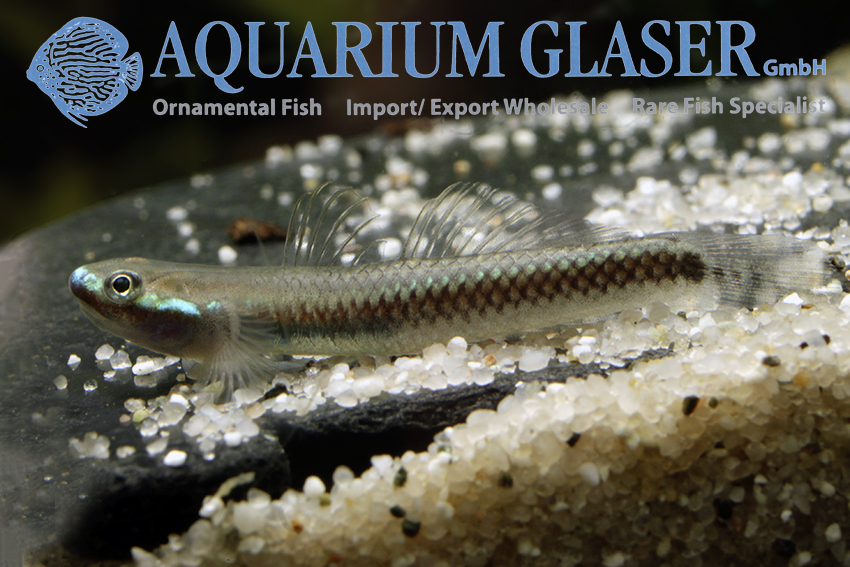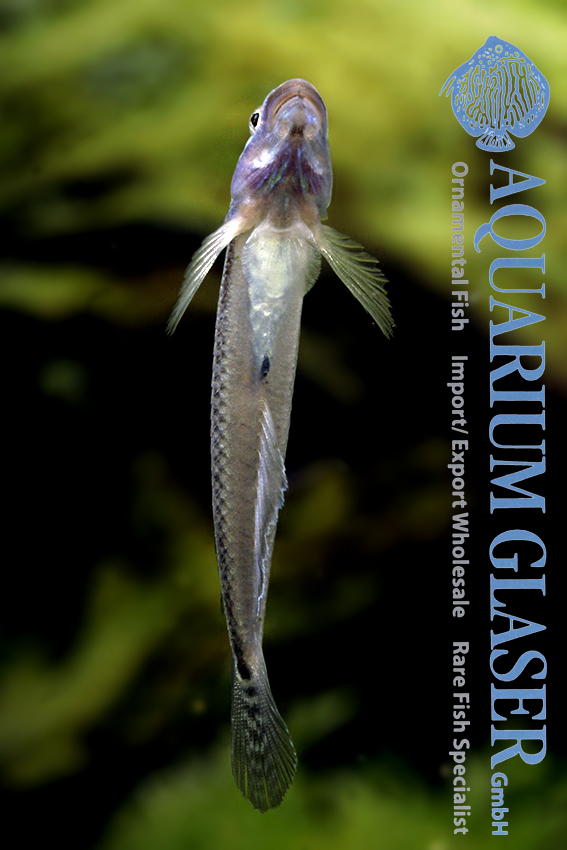This beautiful freshwater goby was originally described as a subspecies of Stiphodon elegans. It originates from West Sumatra (Indonesia), where it lives in clear streams. Stiphodon ornatus feeds on an Aufwuchs, i.e. it feeds on algae and the small creatures that live in them. In the aquarium any form of dry, frost and live food is gladly accepted. Unfortunately, breeding in an aquarium is hardly possible, because the tiny juveniles develop in the sea and, as is well known, the rearing of marine fish is very demanding due to the difficulty of obtaining the correct food. But even without the possibility to reproduce them, Stiphodon offer many, exciting observation possibilities.
Males and females look so different in Stiphodon ornatus (and most other Stiphodon species) that one could think they are different species and in fact they are often offered as different species by the suppliers. The females of all Stiphodon species are white with black longitudinal stripes. One can hardly distinguish the females of the different (there are 37) Stiphodon species. Males grow about 6 cm long, females stay a little smaller. Stiphodon live in a flock, only to spawn single males settle down and establish a territory. They spawn in caves, mostly under stones. The male guards the spawn until the tiny larvae hatch. The water current drifts them into the sea where the larvae spend the first weeks of their life. Then they migrate into fresh water, which they do not leave anymore for the rest of their lives.
For our customers: the animals have code 456072 on our stocklist. Please note that we exclusively supply the wholesale trade.
Text & photos: Frank Schäfer






